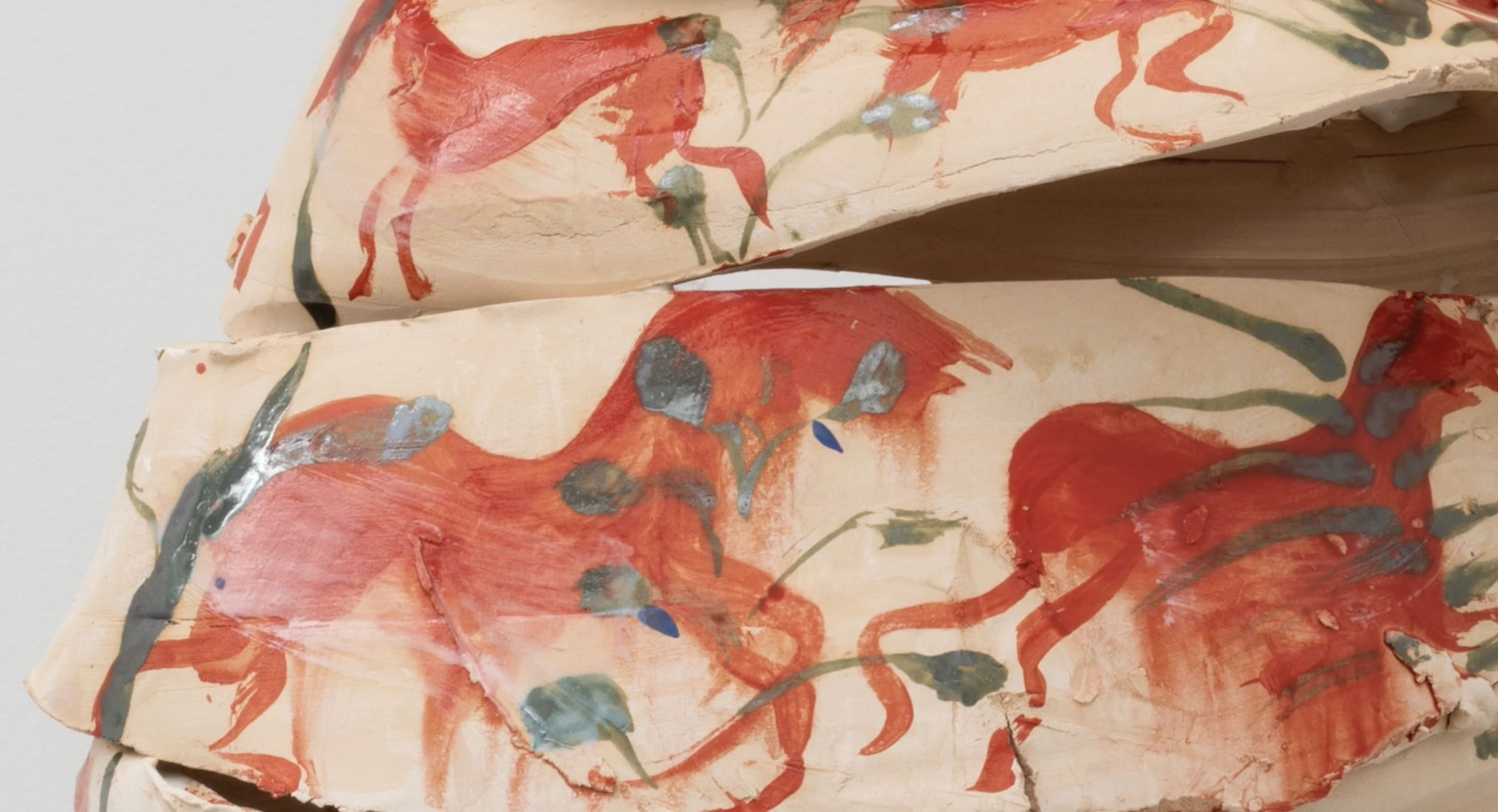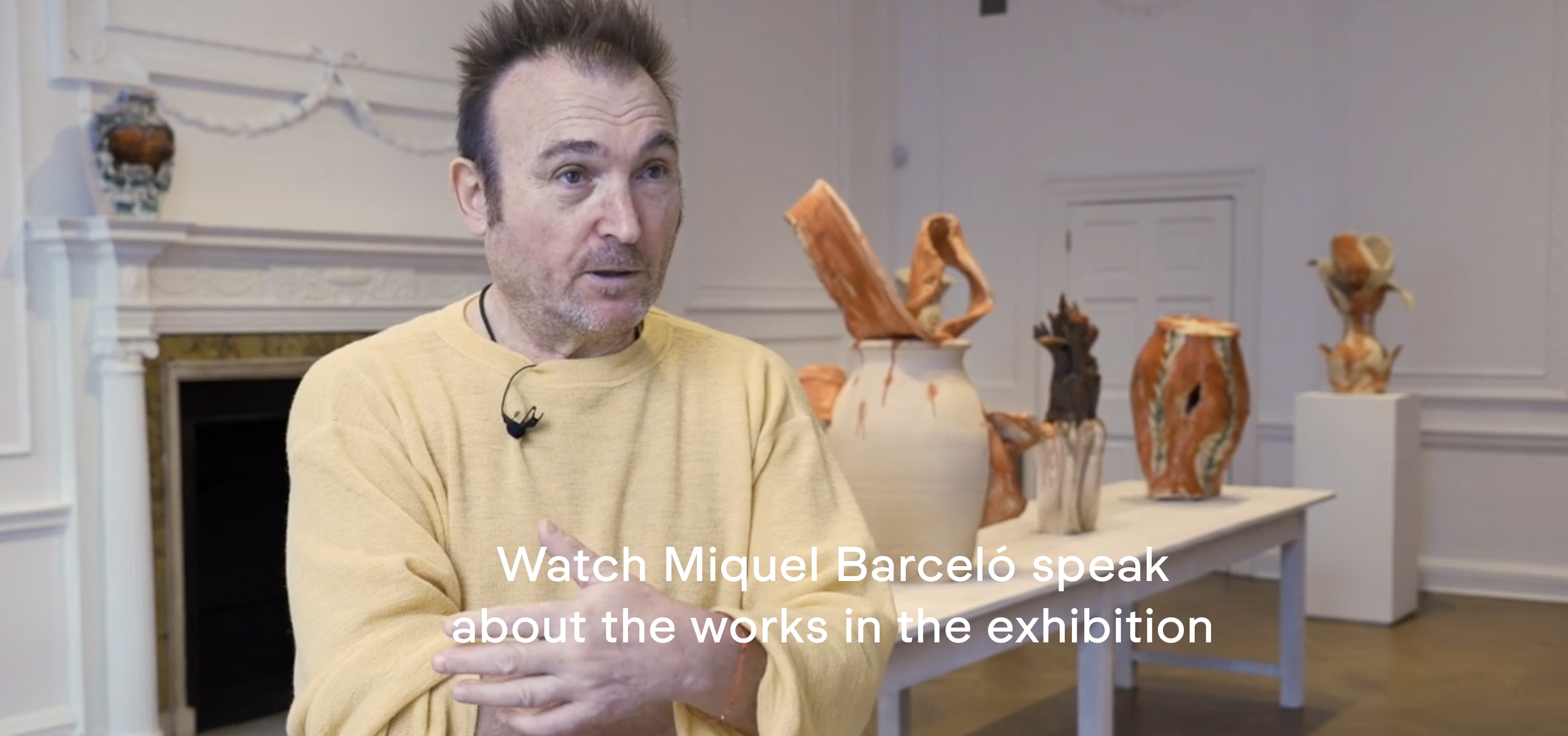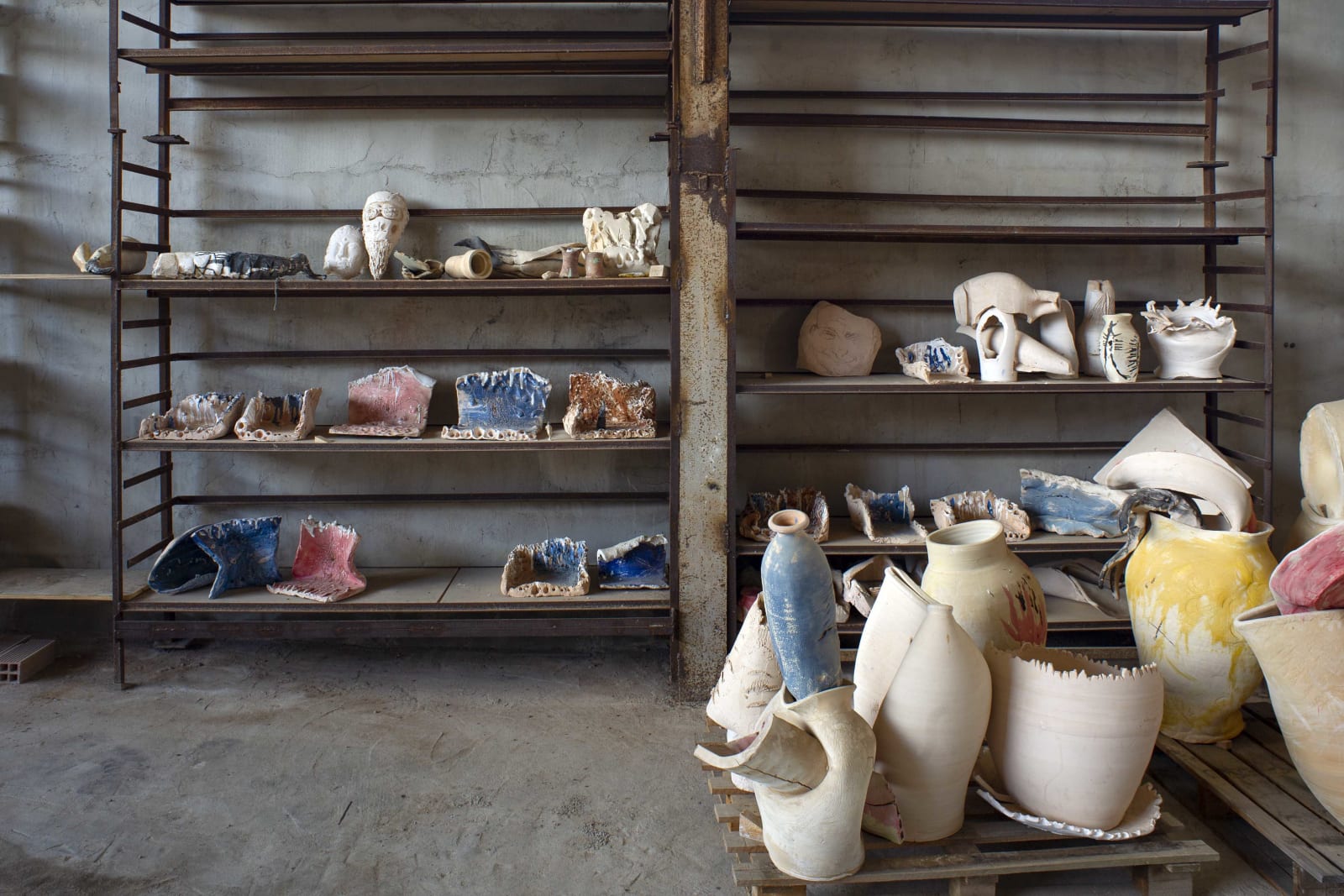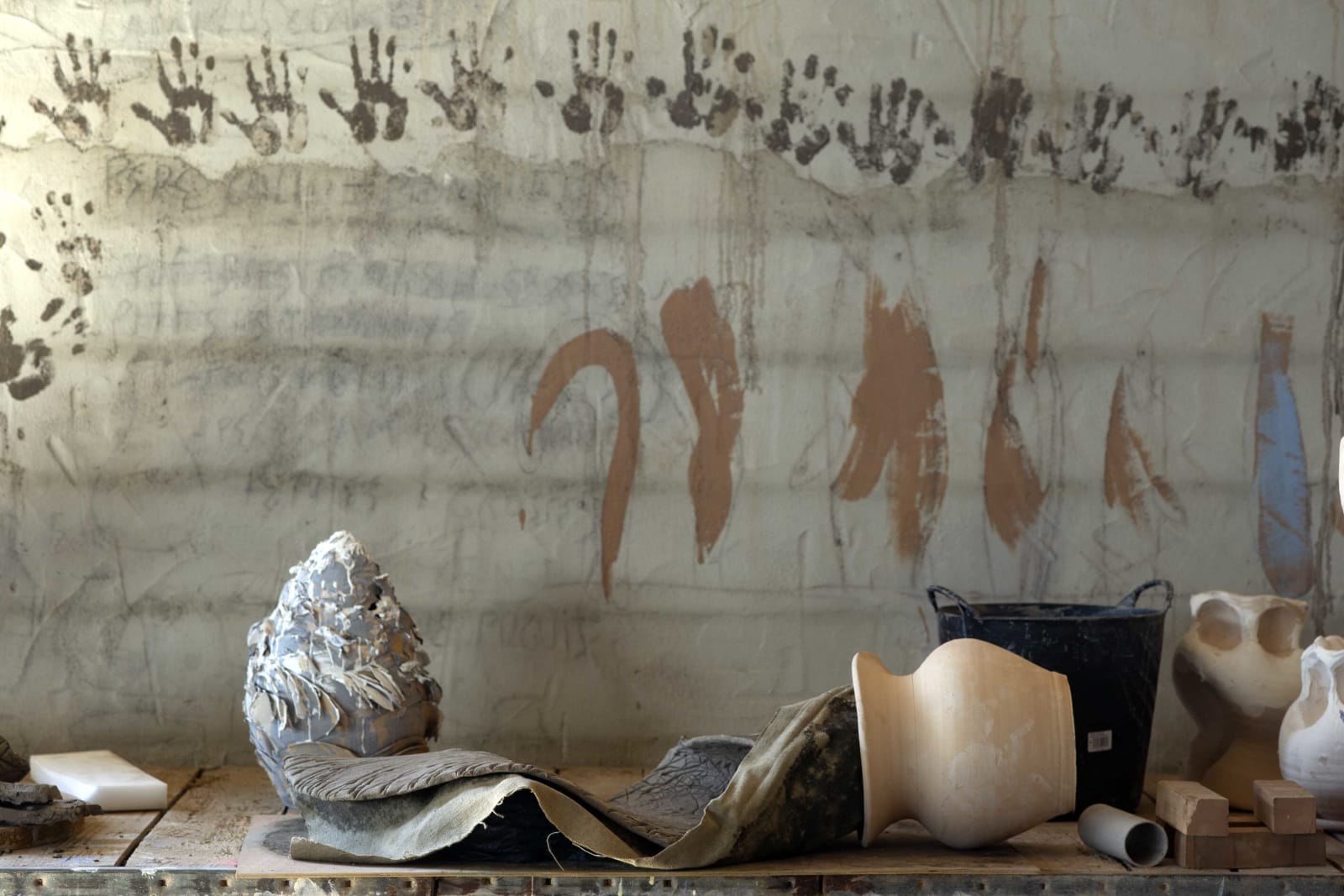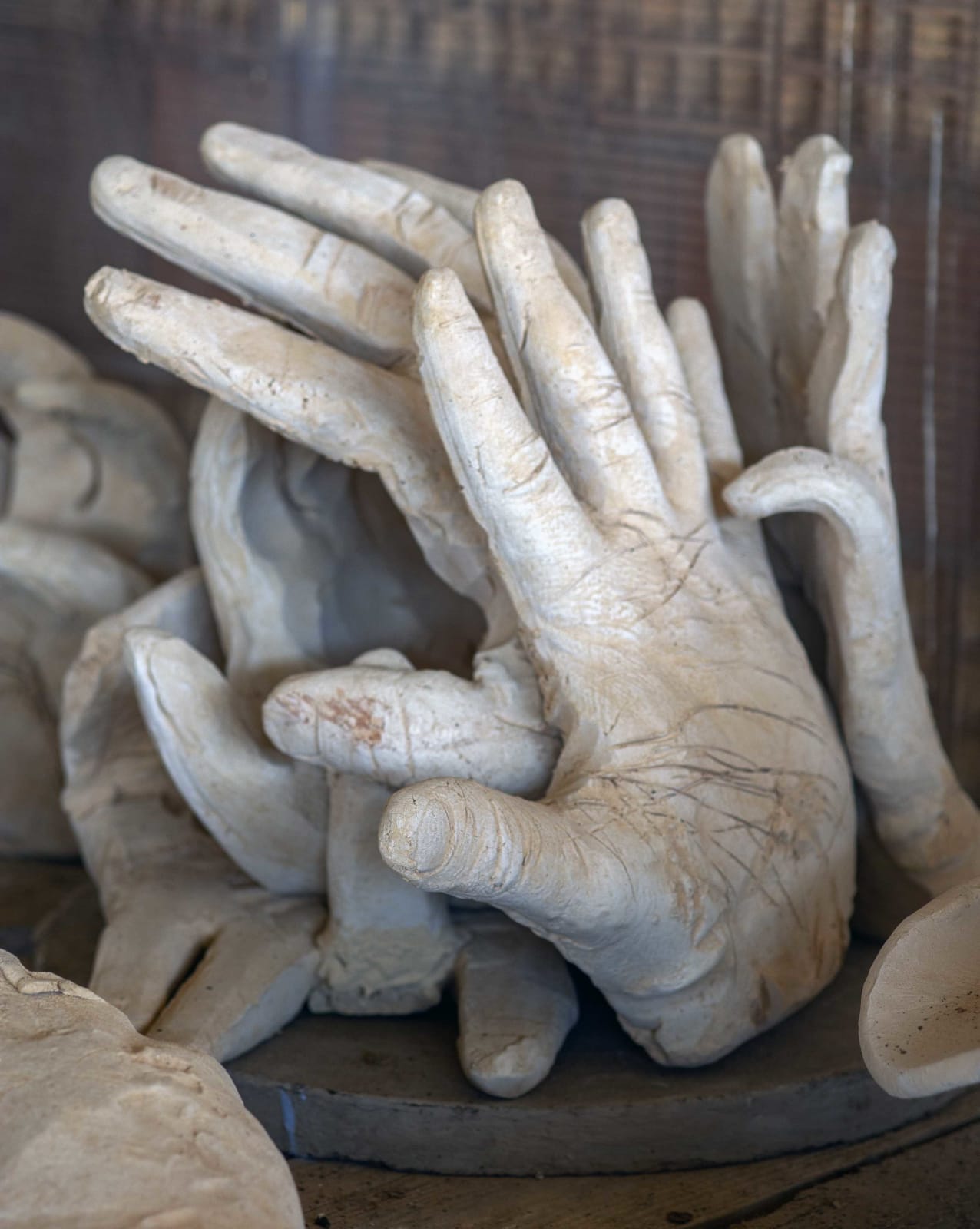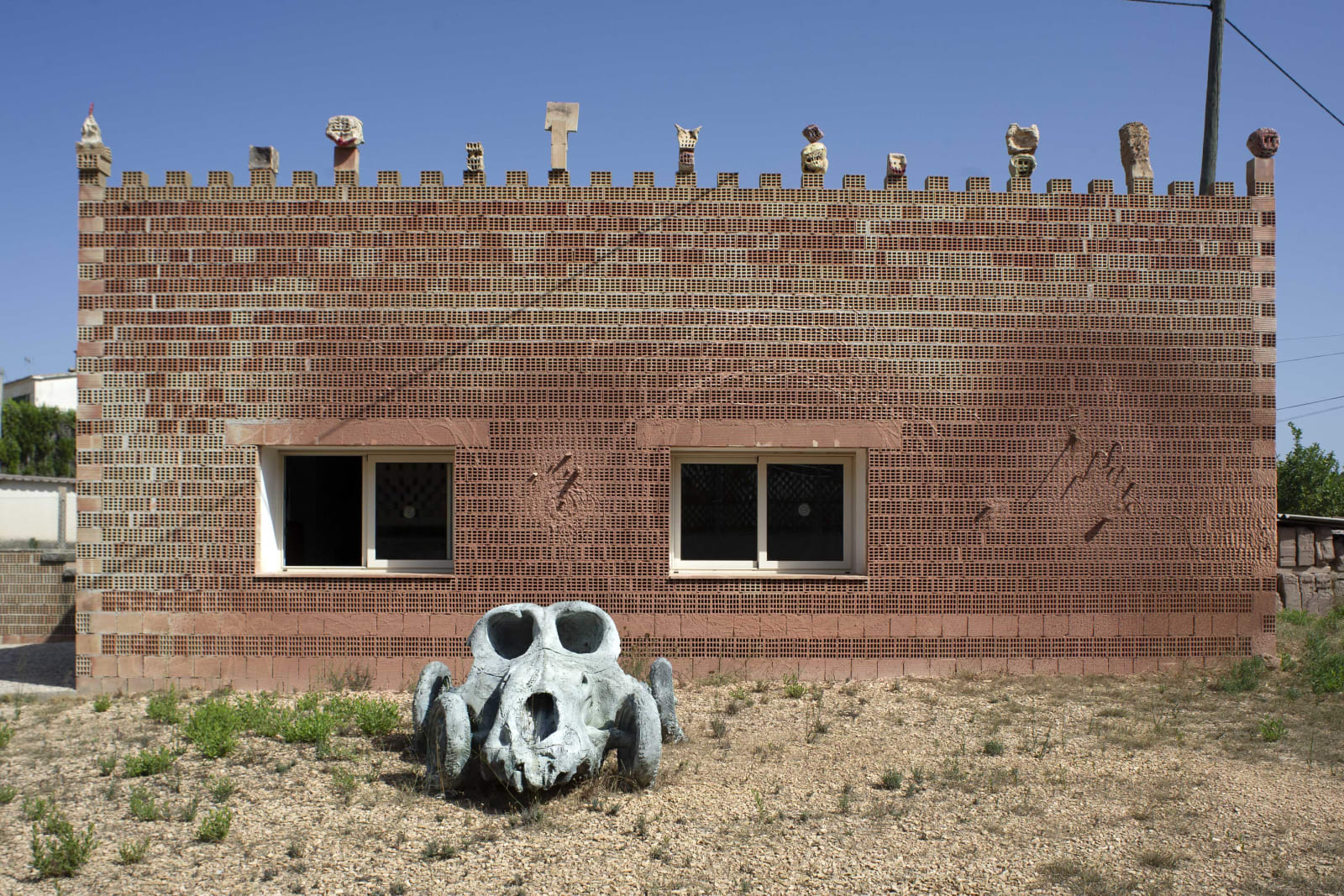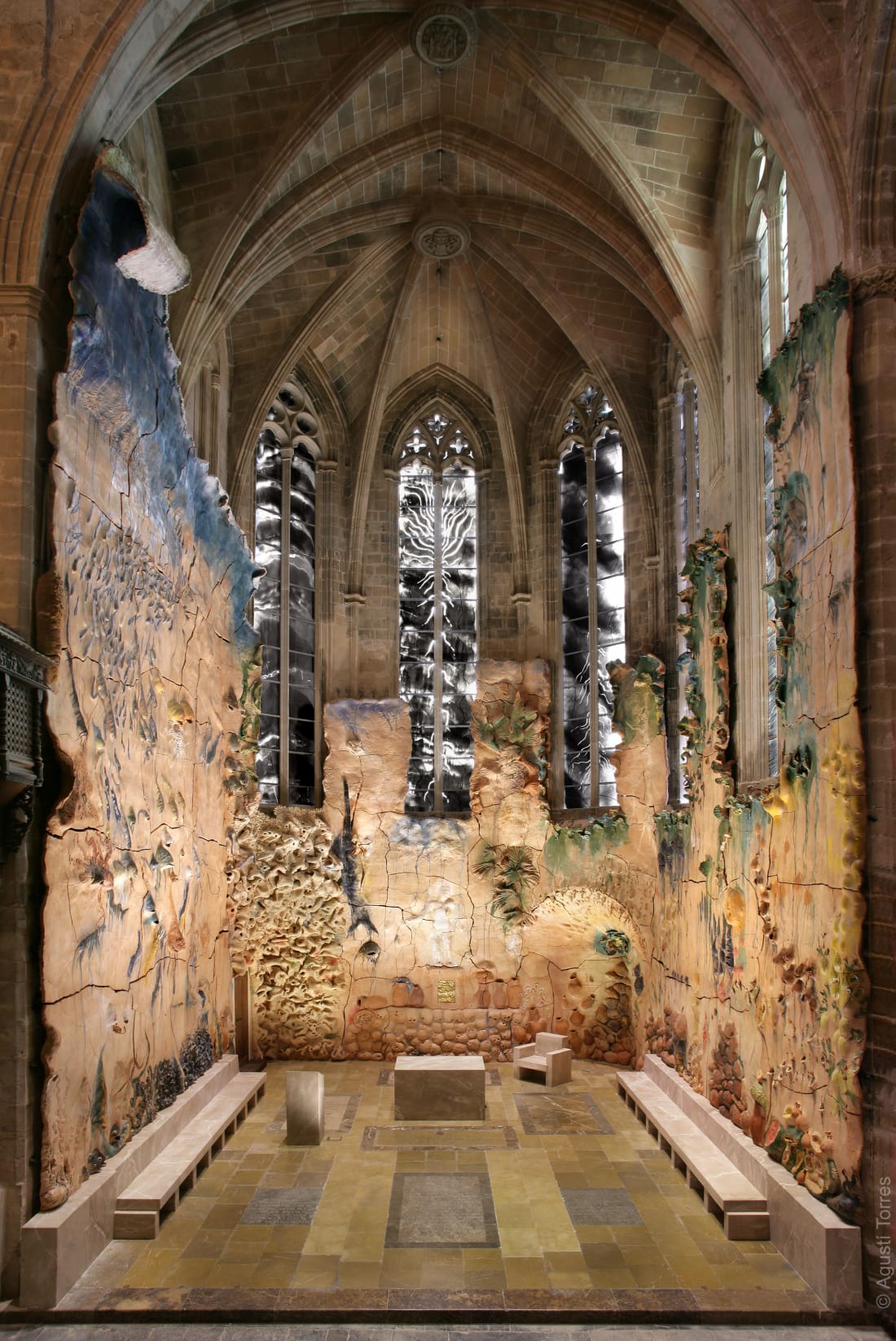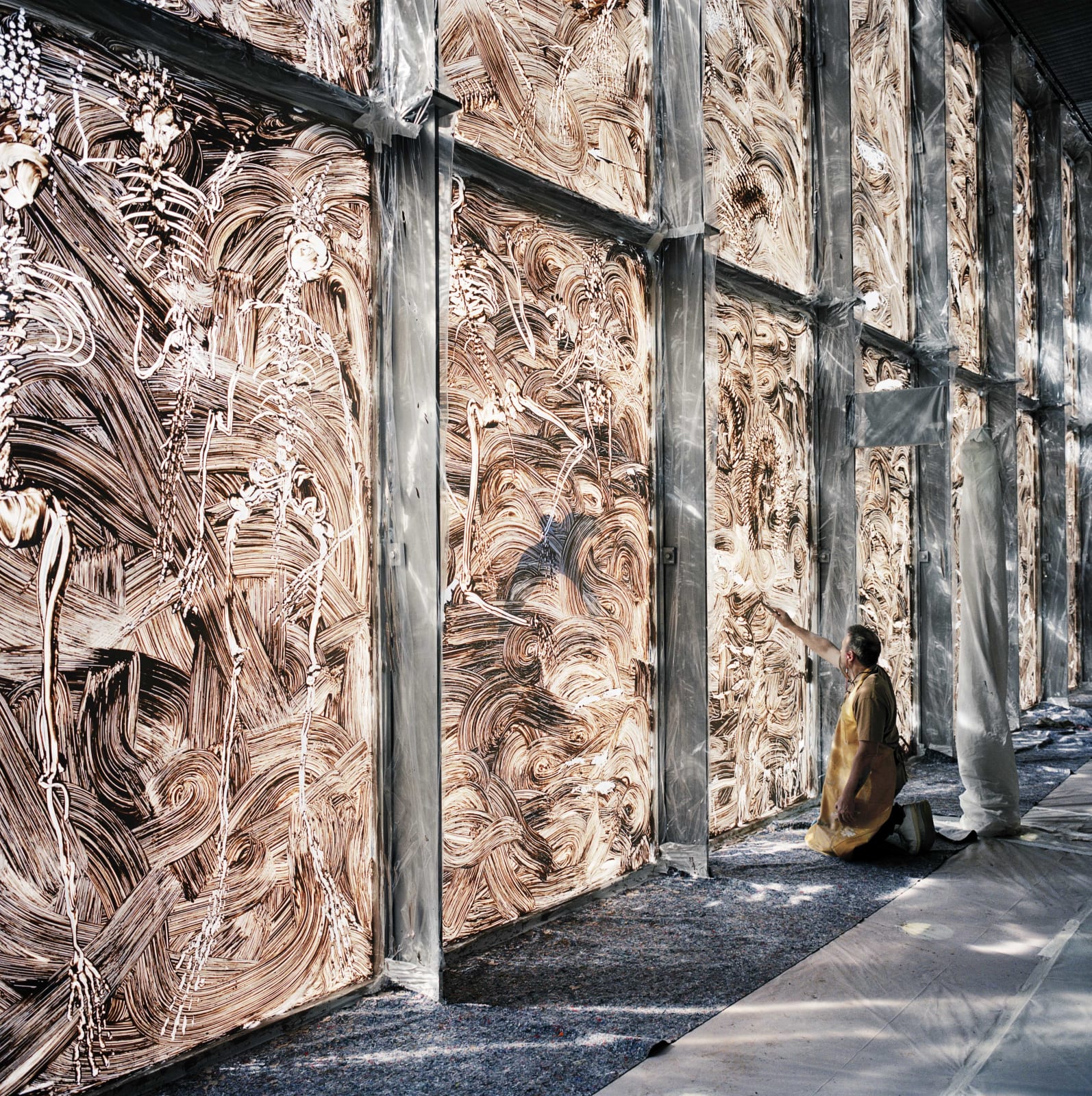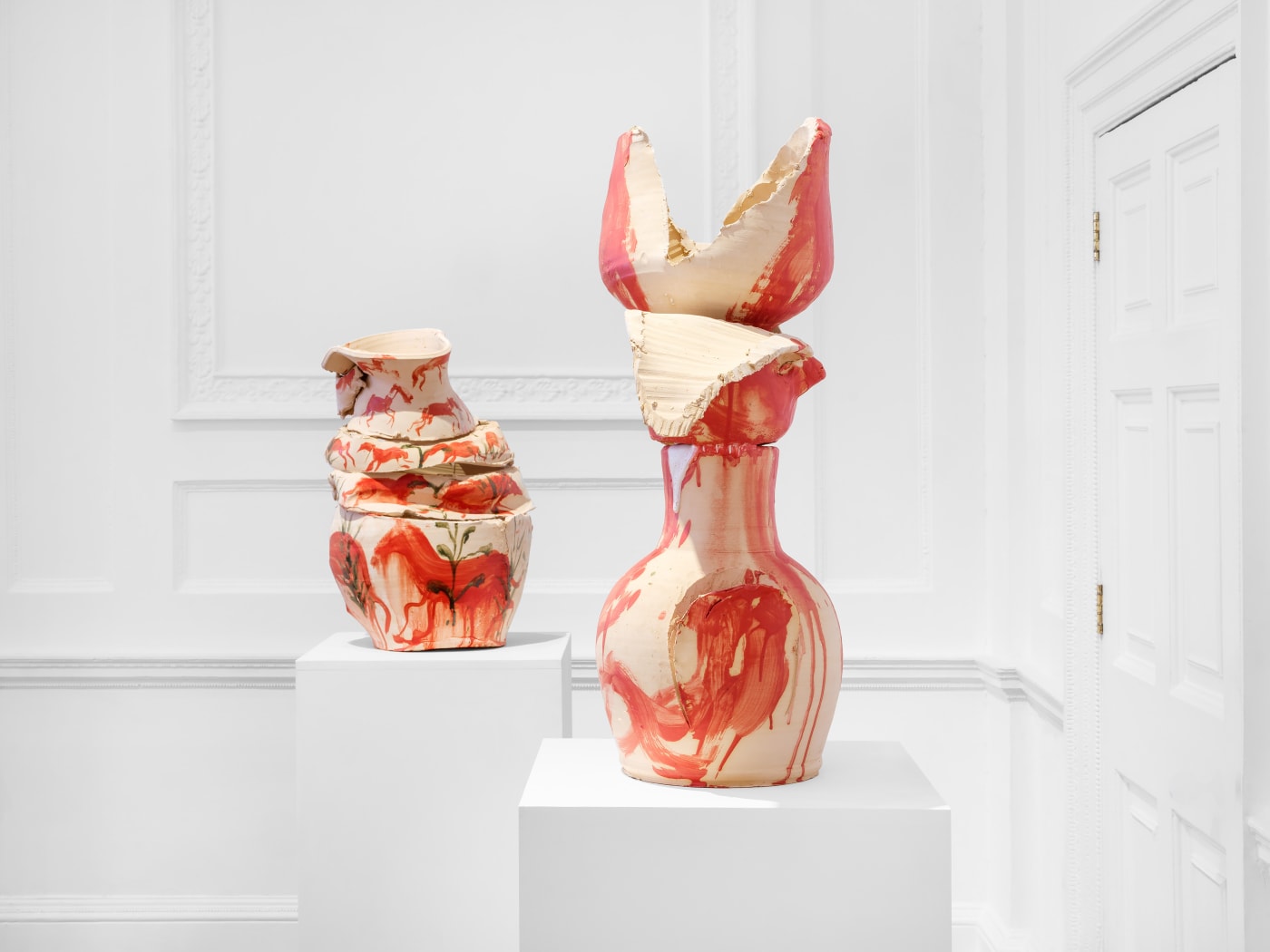
Miquel Barceló's first exhibition of ceramics in London reveals his inventive approach to the medium, which has long been central to his practice. Inspired by ancient techniques from Mali and his native Mallorca, Barceló's ceramic sculptures are captured in a moment of dissolution or becoming, a state of 'continuous transformation'. They seem to evolve before our eyes into other forms: sprouting leaves, rippling with marine life or folding in on themselves.
When I started working with ceramics in Mali, to me it was a continuation of painting through other means. By now, I think I can do completely different things with ceramics. I can use it architecturally. It remains a kind of painting, only you’re inside of it.
— Miquel Barceló

In this way, he connected with prehistoric artistic creations, which have survived as pottery shards or paintings on cave walls. Barceló's time in West Africa proved formative, both for his life and his work. Here, he forged an intimate connection with the earth as a material for his artworks and his body as a tool for creation.
Miquel Barceló at Gao, Mali,1988
Photo: Jean Marie del Moral

Traces of these unconventional beginnings are apparent in his irreverent approach to the medium and emphasis on a sense of visceral materiality. For Barceló, artistic creation is a direct way of relating to the world around him and the ceramics bear the marks of his bodily engagement.
Miquel Barcelo in his studio creating Vilafranca, 2017
Photo: Jean Marie del Moral
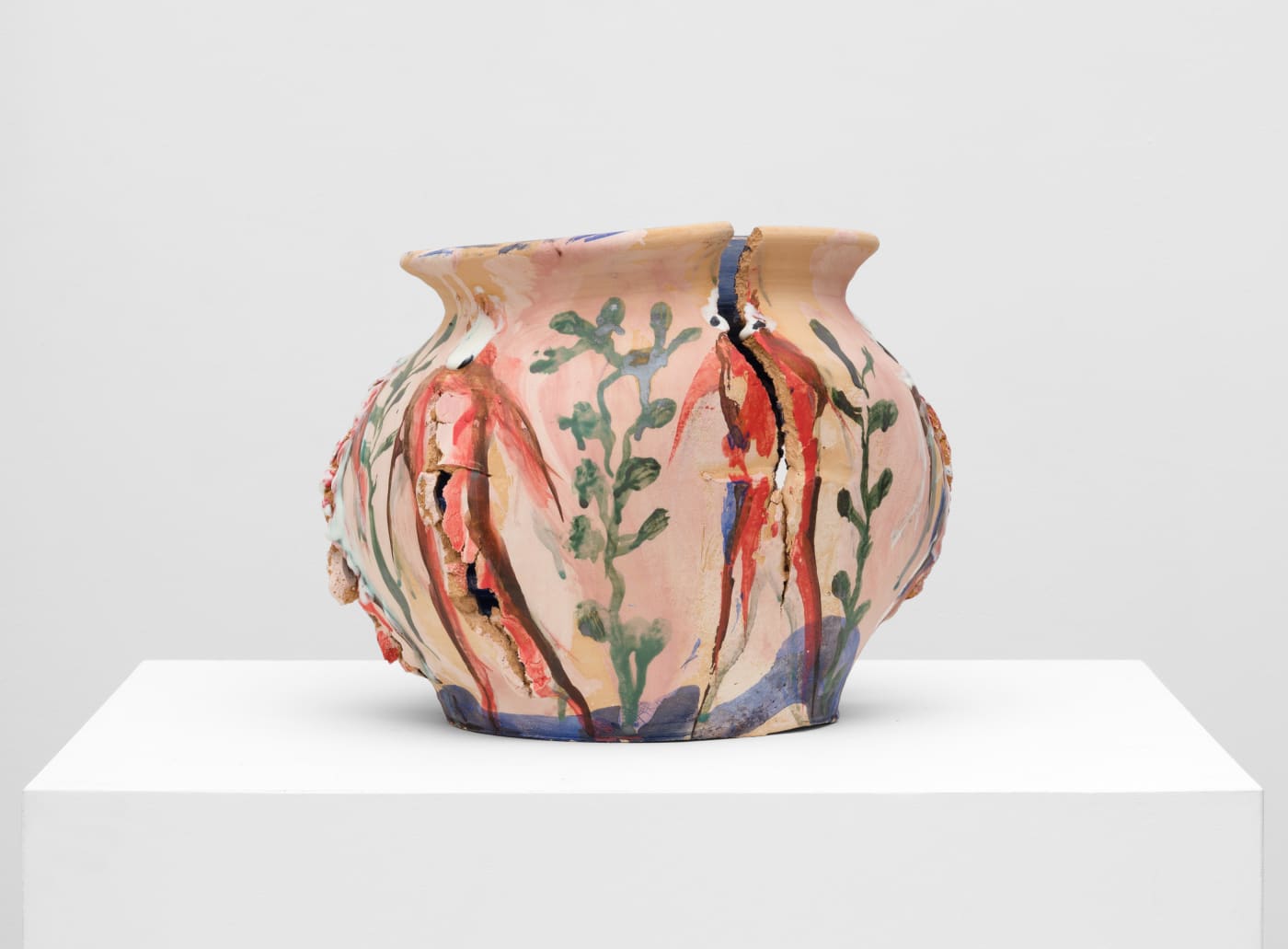

Barceló's vessels are intentionally deconstructed and expressively distorted, with ripples and folds or perforations that open them up to the surrounding space. In gestural, expressive strokes of paint, he depicts the simplified forms of fish and bison, botanical and human figures, recalling the cave paintings in Lascaux where he spent time alongside palaeontologists.
SANEFA, 2020-21
Ceramic
29.5 x 36.5 x 32 cm (11.62 x 14.37 x 12.6 in)
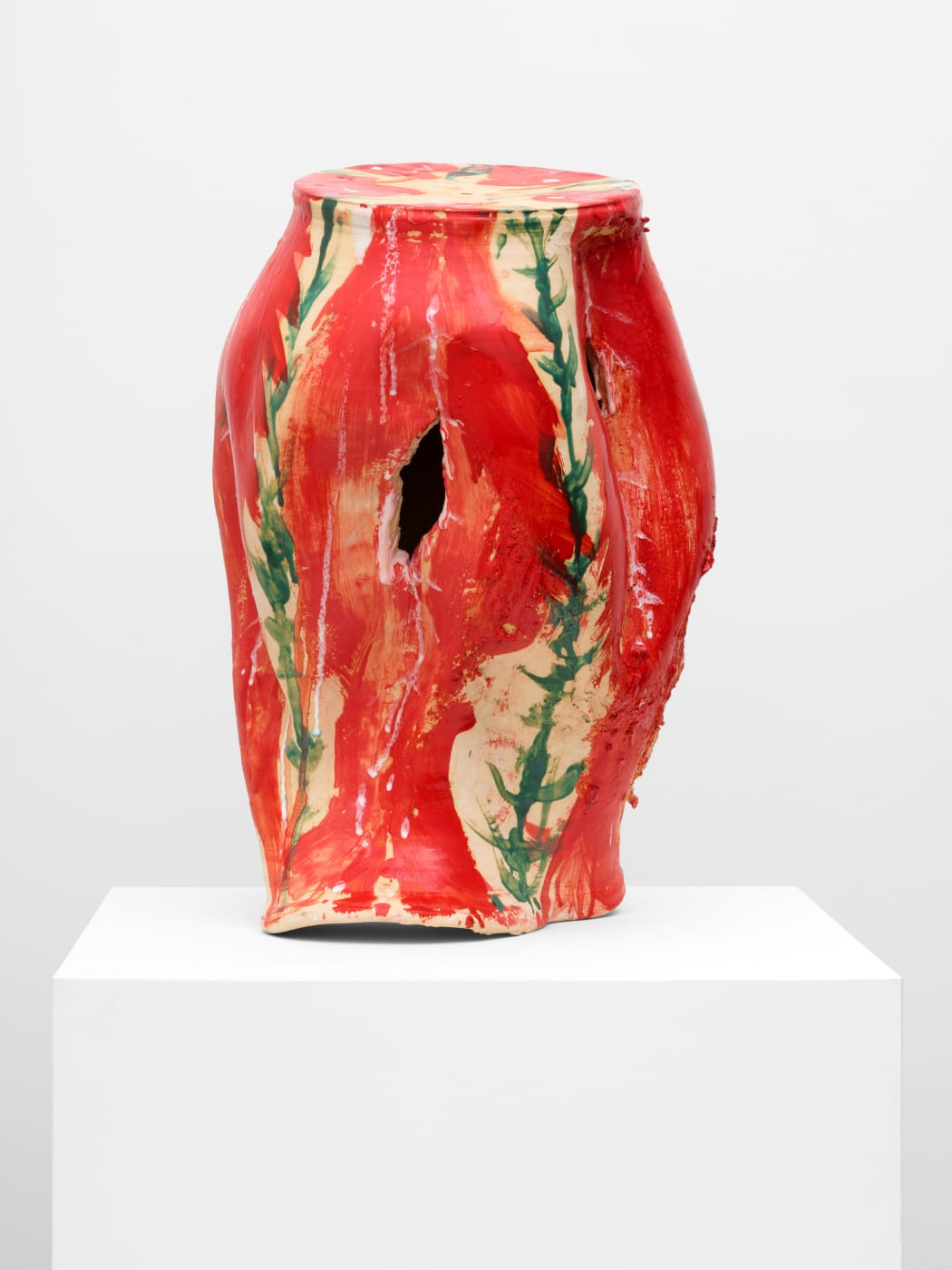


Each work is experimental. Each work is a trial run for another that will probably never exist. I think this is as true of my painting as my ceramics – or any other thing I make.
— Miquel Barceló
ESCÓRPORES DRETES, 2019-2020
Ceramic
65 x 44 x 39 cm (25.59 x 17.32 x 15.36 in)
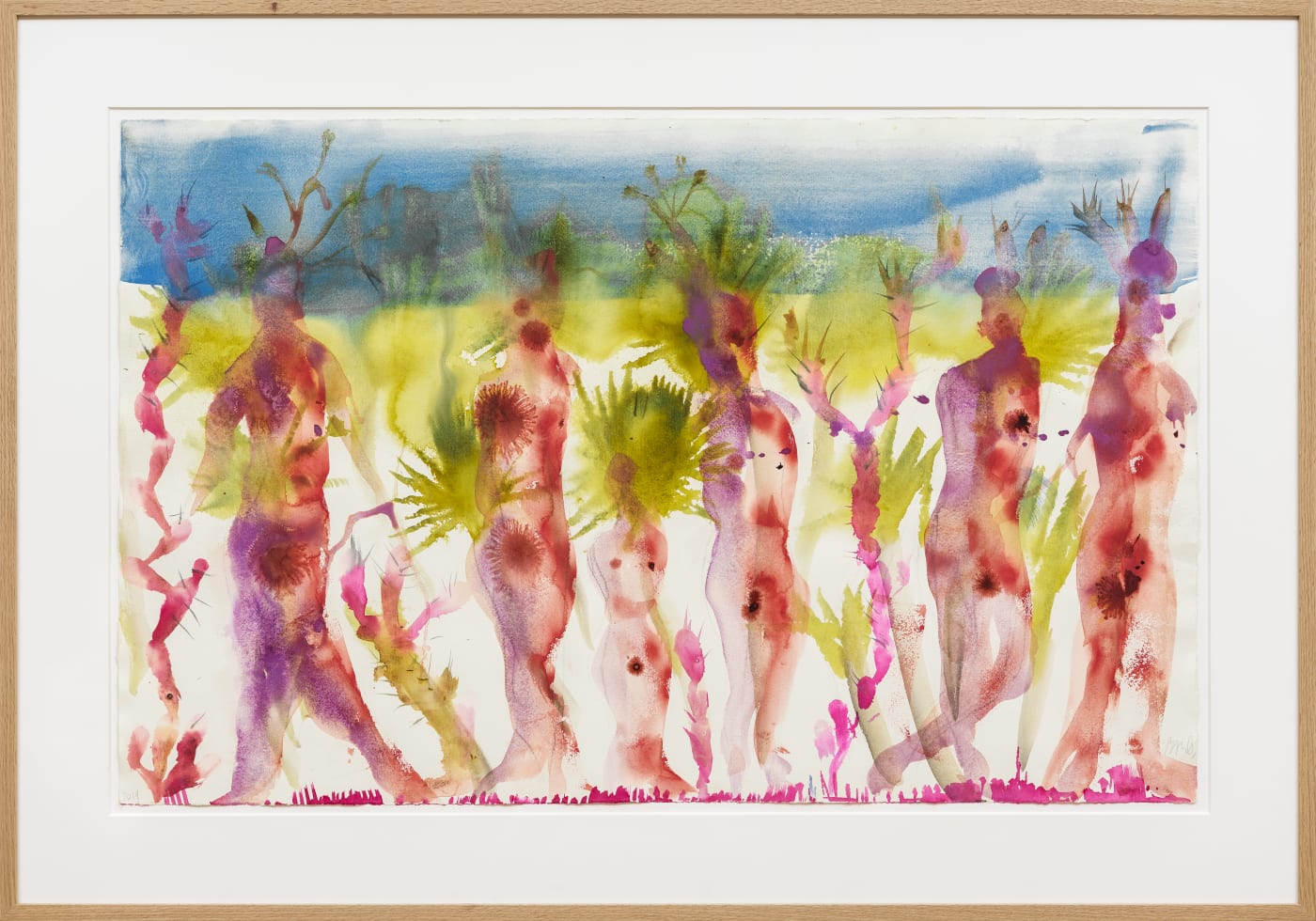
The artist's painterly approach becomes a form of metamorphosis that bridges different media: 'The subject of many of these works is painting, how clay becomes painting, canvas, drawing. In short, a transmutation.' This idea is fundamental to the artist, who recently created original watercolours for a new edition of Franz Kafka's La Métamorphose, first published in 1915.
Plantes grasses siamoises, 2019
Watercolour on paper
61 x 95.5 cm (24.02 x 37.6 in)
Ceramics have become central to Barceló's artistic production, forming the basis of several large-scale works. The central role of the body in his ceramics is exemplified in his Paso Doble performance, conceived with choreographer Josef Nadj for the Avignon Festival in 2006. Barceló describes this as 'a way of staging the tools and gestures of my work with clay. The body as a tool. The body in positive and negative, mould and cast.' The performance has since been staged in New York, Madrid, Zurich, Barcelona, Paris, Athens and Mali as a tribute to those who introduced him to the art of ceramics.
In 2007, Barceló created a 280 square metre terracotta mural for the Palma de Mallorca Cathedral that addresses the biblical miracle of the loaves and the fishes. A year later, he unveiled an installation of thousands of marine stalactites which descend from the domed ceiling of the Human Rights and Alliance of Civilisations Chamber in the United Nations' Palais des Nations in Geneva. He also created an ephemeral mural for the Bibliothèque Nationale, Paris in 2016, applying gestural smears of clay to its windows before scratching out the outlines of human and animal forms that reference prehistoric paintings.
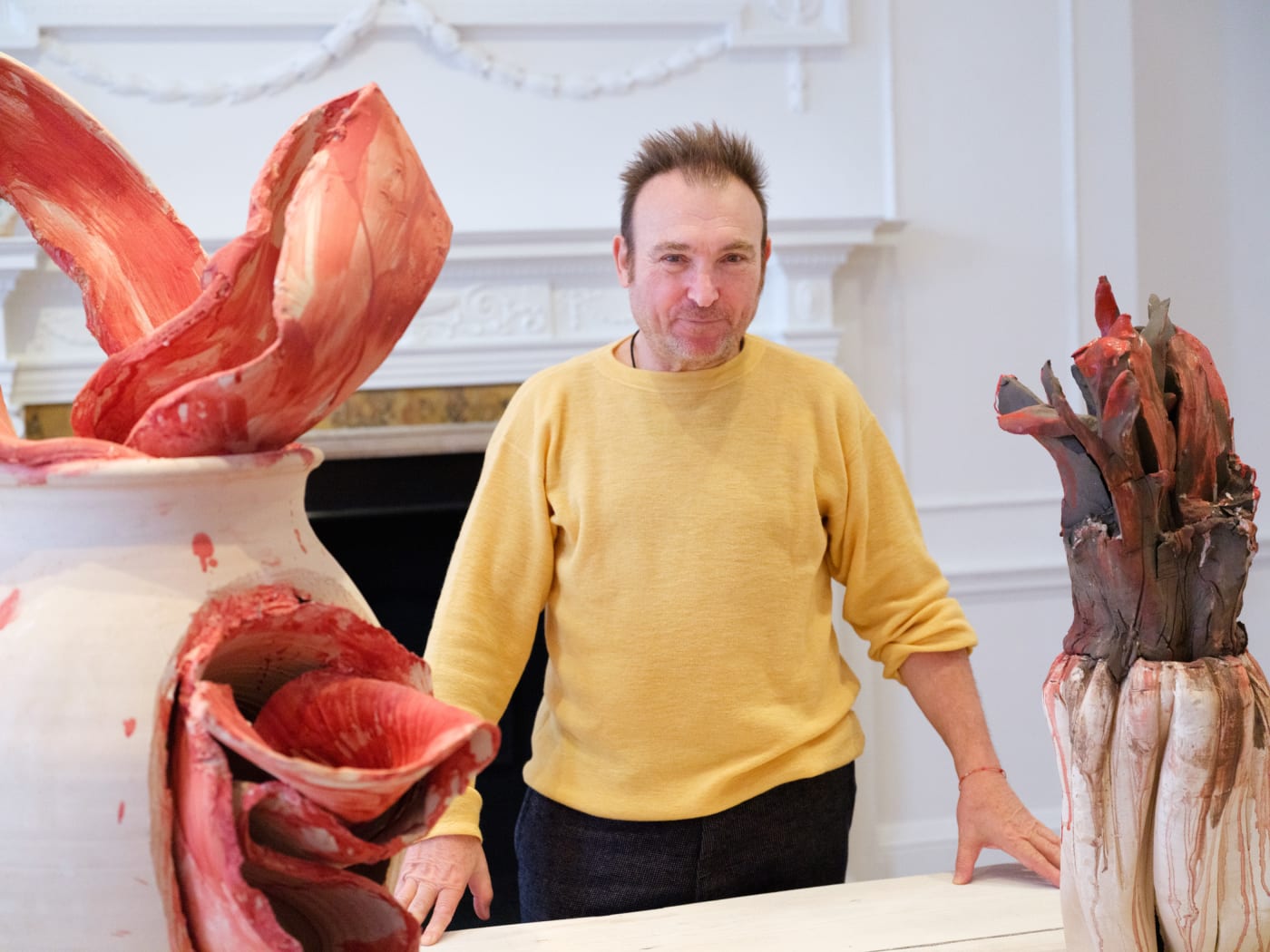
Miquel Barceló was born in 1957 in Felanitx, on the island of Mallorca, and now divides his time between his birthplace and Paris. As a young artist, his participation in the São Paulo Biennial in 1981 and documenta 7 in Kassel in 1982 helped establish his international reputation. Deeply influenced by poetry, he exhibited more than 300 drawings illustrating Dante's Divine Comedy at the Louvre Museum in 2004. He represented Spain at the 53rd Venice Biennale in 2009, presenting ceramics alongside his paintings. Numerous retrospectives of his work have been hosted by renowned institutions, including the Centre Pompidou, Paris; Museo Nacional Centro de Arte Reina Sofía, Madrid; and the Museo Rufino Tamayo, Mexico City. In 2019, a monographic exhibition of Barceló's ceramics took place at the Museo Internazionale delle Ceramiche, Faenza. His solo exhibition Metamorfosis was shown at the Museo Picasso, Málaga in 2021, followed by an exhibition at the Tokyo Opera City Art Gallery in 2022.
